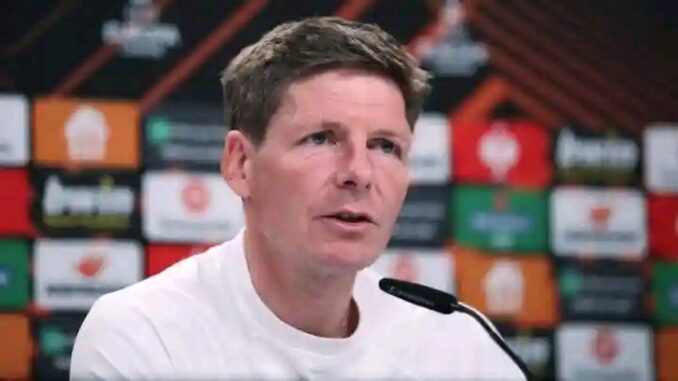
Regret at Club Clear as Oliver Glasner Continues Crystal Palace Transformation
There’s an undeniable sense of regret echoing through the corridors of Selhurst Park — not over Oliver Glasner’s appointment, but rather over how long it took Crystal Palace to embrace the revolution he’s now leading. Since his arrival, the Austrian tactician has quietly transformed a once-inconsistent side into a confident, tactically fluid outfit. And while the journey is still ongoing, it’s increasingly apparent that Palace could have reached this point much sooner had they acted decisively earlier.
When Glasner replaced Roy Hodgson, there were doubts — understandable ones. Hodgson was a beloved figure, the steady hand that guided Palace through turbulent seasons. But Glasner’s entry marked a sharp departure from the cautious pragmatism of the past. His brand of football demanded intensity, verticality, and bravery — qualities that took time to instill. Now, months into his tenure, those traits are finally being reflected in Palace’s performances. The regret from within the club stems from the realization that this shift could have started years earlier.
A Club Reborn Under Glasner
Oliver Glasner’s impact on Crystal Palace cannot be overstated. Known for his tactical precision and ability to extract the maximum from his squads, Glasner has brought an entirely new energy to the club. Training sessions are sharper, pressing drills more aggressive, and players are encouraged to think proactively instead of reactively. The result is a team that no longer simply survives in the Premier League — it competes.
Palace’s recent performances illustrate the transformation. Their defensive structure, once leaky and passive, now operates like a synchronized machine. Marc Guéhi and Joachim Andersen have flourished under Glasner’s leadership, becoming not just defenders but initiators of attacks. In midfield, players like Eberechi Eze and Cheick Doucouré have found new freedom, blending creativity with discipline. And up front, Jean-Philippe Mateta’s resurgence under Glasner is perhaps the most symbolic of all — a striker once dismissed as inconsistent now looks reborn.
Fans have noticed it too. The atmosphere at Selhurst Park has changed. Supporters are no longer watching nervously as Palace cling on to narrow leads — they’re witnessing a team that controls games and dictates tempo. Glasner’s football has restored pride, passion, and a clear identity.
The Lingering Regret
Behind the scenes, though, there’s a feeling of “what if?” What if Palace had made this move sooner? What if Glasner — or a manager of similar forward-thinking philosophy — had been brought in during the early years of the club’s Premier League stability?
For too long, Palace existed in a cycle of short-term fixes. Managers were often appointed for stability rather than progression. The result was stagnation. Talented players came and went, their potential often untapped under systems that valued safety over ambition. Now, as Glasner’s side begins to blossom, many inside the club acknowledge — privately or otherwise — that the transformation could have started years ago.
There’s a quiet regret that key players who once donned the red and blue — Wilfried Zaha chief among them — didn’t get the chance to play under a manager like Glasner. His attacking philosophy, quick transitions, and tactical flexibility seem tailor-made for Zaha’s explosive style. The thought of a Zaha-Eze-Mateta front line under Glasner’s direction is enough to make any Palace fan wonder what might have been.
Glasner’s Tactical Revolution
The Austrian’s tactical system is both sophisticated and adaptable. He prefers a 3-4-2-1 formation, built on structured pressing and rapid counter-attacks. Each player has a defined role, yet is given the freedom to interpret space creatively. Unlike previous regimes, Glasner demands total commitment — both physically and mentally.
Training intensity has been a key talking point. Players have admitted that sessions under Glasner are among the most demanding they’ve ever experienced. But the payoff is clear: Palace now play with cohesion, discipline, and conviction. Even when results haven’t gone their way, performances have maintained a level of consistency that was previously elusive.
His man-management has also drawn praise. Glasner’s ability to connect with players, to challenge them while making them feel valued, has rejuvenated the dressing room. Senior figures like Andersen have emerged as vocal leaders, while young prospects — such as David Ozoh and Jesurun Rak-Sakyi — have been integrated with care and confidence.
Building for the Future
While regret lingers over the past
Leave a Reply